If you are concerned about the environment, this project will be of interest to you as our objective is to produce continuous energy, pollution-free.

You know about the dangers of nuclear energy, as well as about the greenhouse effect caused by internal combustion engines and coal-fired power stations.

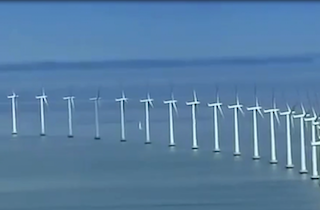

The energy that wind turbines and solar panels produce fluctuates and is not continuous.
In order to limit the risks entailed in these energy sources, we are developing the Gravity-One project. To achieve this, we have used a simple resource; the acceleration of masses at high speed. By way of an example, with very little energy, you can increase the apparent weight of a 1 kg mass by several tonnes by making it rotate very rapidly. A 1 kg mass rotating at 6,000 rpm over a radius of 60 centimetres produces 24 tonnes of traction over the radius it is within. Formulas produced by our friend Bernard Lhomme from the CNRS (French National Centre for Scientific Research) validating the tests shown in this video.
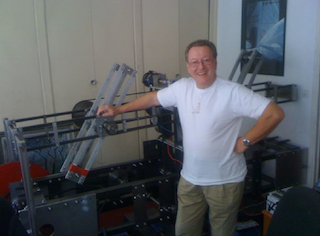
Centrifuge Force F (Newton) :
F = M(Omega2)R
N = RPM (Rotation Per Minute)
F = M((PiN/30))2)R
M = Masse en kg
N = 6.000 RPM
R = Mass turning radius (meter) = 0,6 m
F = 1*((3.14 * 6000 / 30)*2)0,60 = 236 870 N / 9.81 (G) = 24 145 Kgf.m = 24 tonnes.
Here we present one of our prototypes, designed like a child’s see-saw
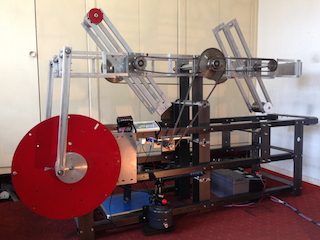
It features a jointed fork in the middle.
At its end, this fork is held by a rod linked to a crankshaft joined to a flywheel, which enables the fork’s kinetic energy to be conserved.
At the same distance from the fork’s central pivot are two axles, each of which bears a sort of wheel.
Each wheel has a 6 kg mass fixed onto it. The wheels are interlinked by a chain so that the masses always remain 180° apart from each other. When the red mass falls, the white mass rises.
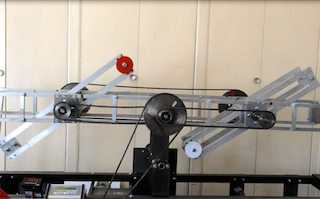
If you want to understand what the influence of the masses on the fork will be, you need to imagine the direction of the force pulling on the axles of the wheels.
The left wheel pulls the fork upwards and the right wheel pulls the fork downwards.
These two forces combine and pull in alternation on the left and right of the fork, thereby keeping it continually balanced.
To measure the energy consumed, we use an electronic torque meter
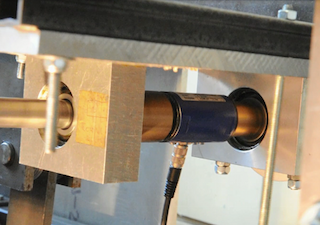
Using this prototype, we can compare:
A) The energy consumed in order to make the wheels rotate at 140 rpm.
B) The energy produced by the balancing of the fork, under the influence of the wheels rotating at 140 rpm. To measure the energy consumed, we use an electronic torque meter which gives us a reading of 4.24 Newton at 140 rpm. This represents power consumption of 62 Watts.
Calculation of the power consumption :
P = Power in watts
Nm = Couple en Newton mètre
Pi = 3.14 N = RPM (Rotation Per Minute)
P = (Nm* Pi * N / 30)
P = (4.24 * 3.14 * 140 / 30) = 62 watts
To measure the energy produced by the balancing of the fork, we use a Prony brake
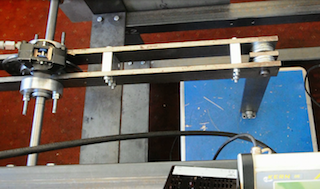
To measure the energy produced by the balancing of the fork, when the wheels are rotating at 140 rpm, we use a Prony brake that provides a reading of 19.52 Newton at 140 rpm, amounting to power production of 286 Watts.
P = (19.52 *3.14 * 140 / 30) = 286 watts.
At this stage of the experiment, we have two measurements.
The power consumption for making the wheels rotate is 62 Watts.
The power production due to the balancing of the fork is 286 Watts.
So it may be thought we have a winner here and that we are producing more energy than we are consuming. Well for the time being, the answer is “no” because in order to maintain the wheels’ rotational speed at 140 rpm, when we harness the energy produced, the drive power has to be increased and the potential excess energy yield disappears.
We have seen that the power produced comes only from the charge transfer generated by the rotation of the wheels.
There is no mechanical link between the rotation of the wheels and the balancing of the fork. To prove this, all you have to do is block the balancing of the fork; you will note that the wheels continue to rotate.
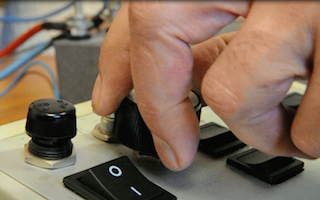
So this raises the question: “Why does the wheels’ rotational consumption increase when we harness the balancing of the fork?”
Our research has shown that the current harnessing of the energy produced by the balancing of the fork breaks the kinetic energy of the masses on the wheels. This made us come up with a new way of harnessing the energy, so as to avoid any further impact on the kinetic energy of the masses.
In this case, the rotation of the masses should therefore always consume 62 Watts and produce 286 Watts.
If this technical development (which forms the subject of a new patent we have filed) functions as foreseen, we will be able to supply the excitation of the masses with the energy produced by the balancing of the fork. The energy difference will be available for serving human activity without generating pollution.
Designing individual generators fitted with heavier masses that rotate faster in order to produce the energy required for everyone’s needs is perfectly foreseeable. Pulling this feat off would provide the world’s nations with real energy independence and would offer a real solution for combating the greenhouse effect.